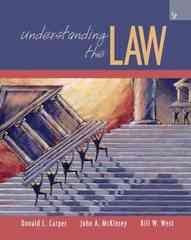Question
Part 3: Watch the following video: https://mru.org/courses/development-economics/prematuredeindustrialization?utm_source=EX&utm_medium=MRU&utm_campaign=MRUEmail&utm_c ontent=premature-deindustrialization Answer the following questions: 1. What is premature deindustrialization? a. The removal of automation from factories, which
Part 3:
Watch the following video:
https://mru.org/courses/development-economics/prematuredeindustrialization?utm_source=EX&utm_medium=MRU&utm_campaign=MRUEmail&utm_c ontent=premature-deindustrialization Answer the following questions:
1. What is premature deindustrialization?
a. The removal of automation from factories, which holds back manufacturing growth.
b. Government regulation of manufacturing industries in developing economies.
c. A decrease in manufacturing jobs which may impede paths to economic growth.
d. A movement to remove industrial infrastructure for environmental reasons.
2. Which of the following is NOT a reason manufacturing jobs encouraged economic development in the past? *
a. Manufacturing jobs had especially high rates of productivity.
b. Manufactured products tended to be easier to export than person-to-person services, which increased trade.
c. Manufacturing encouraged investment in human capital and national infrastructure projects.
d. Manufacturing jobs required less training than service sector jobs, which created more job opportunities.
3. What is one possible path for economic development now that export-oriented growth is in decline? *
a. Internal trade growth.
b. Technological growth.
c. Investment in physical capital.
d. Import-oriented growth.
4. What is consumer-led growth? *
a. Growth created by companies that have been started by consumers.
b. Growth generated to fill increased demand for consumer products in developing economies.
c. Growth generated by cheap consumer products used to run businesses more effectively.
d. Growth created by improved feedback mechanisms between producers and consumers, leading to more targeted use of resources.
5. Historically, wealthy countries had large parts of their workforce in __________________________. *
a. Manufacturing
b. Financial services
c. Agriculture
d. Construction
Part 4: Listen to the podcast:
https://www.npr.org/2020/08/05/899393029/summer-school-5-tradesanta?utm_source=EX&utm_medium=Podcast&utm_campaign=MRUEmail&utm_content=sum mer-school-5-trade-santa&__s=2oc8halfeuhyhq4vi3c2
1. Describe about something you do everyday and how difficult it would be to accomplish it without trade, if you had to make everything from scratch.
Step by Step Solution
There are 3 Steps involved in it
Step: 1

Get Instant Access to Expert-Tailored Solutions
See step-by-step solutions with expert insights and AI powered tools for academic success
Step: 2

Step: 3

Ace Your Homework with AI
Get the answers you need in no time with our AI-driven, step-by-step assistance
Get Started


